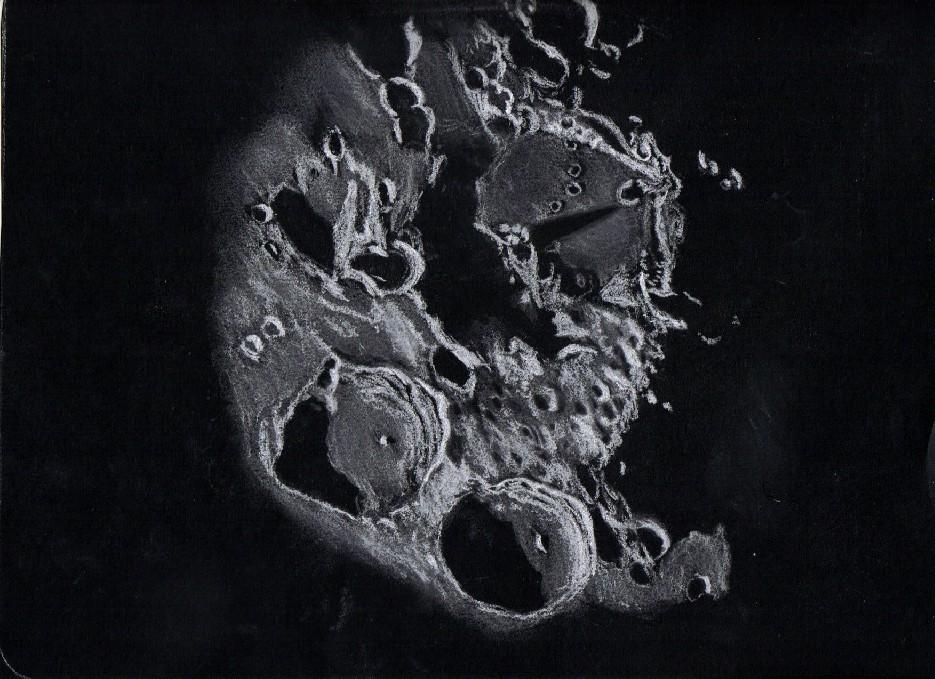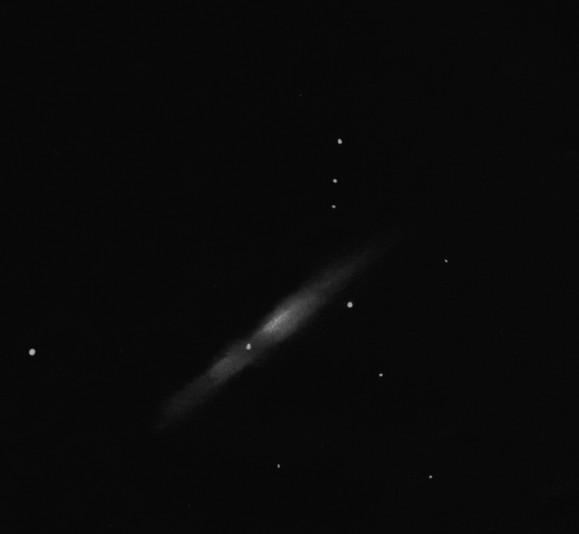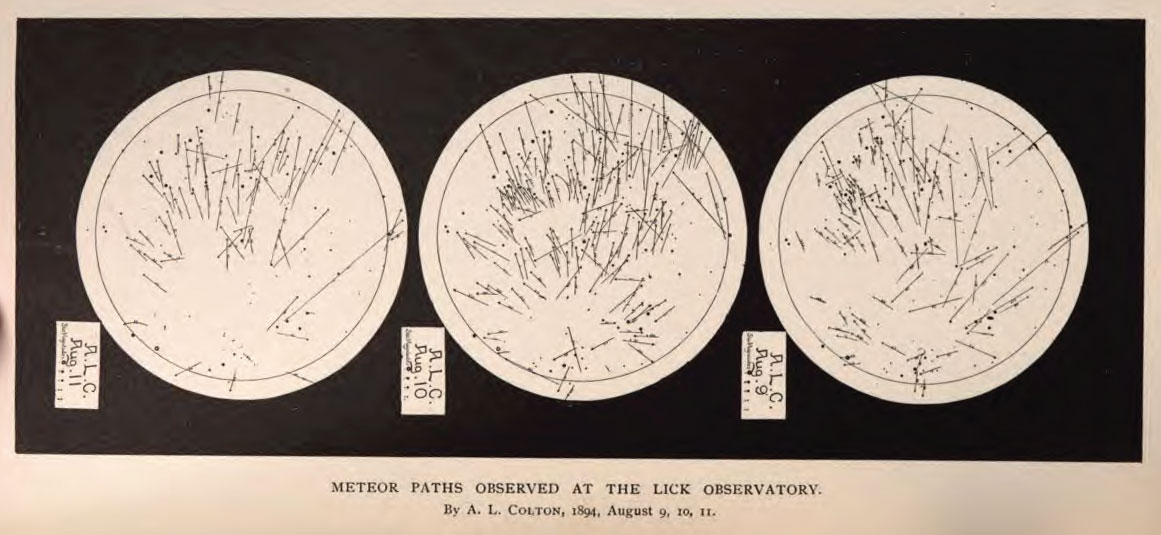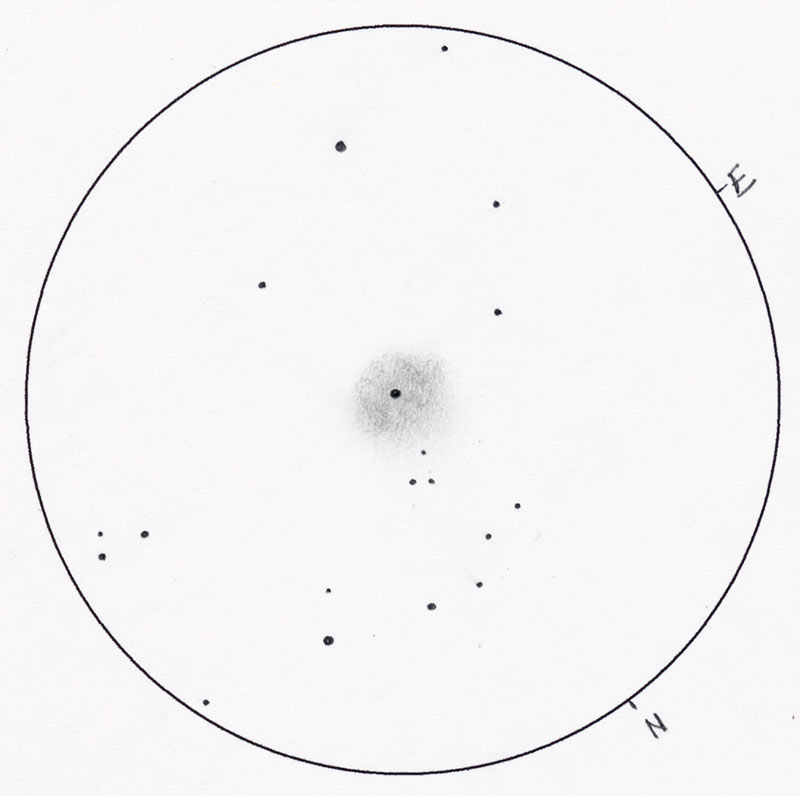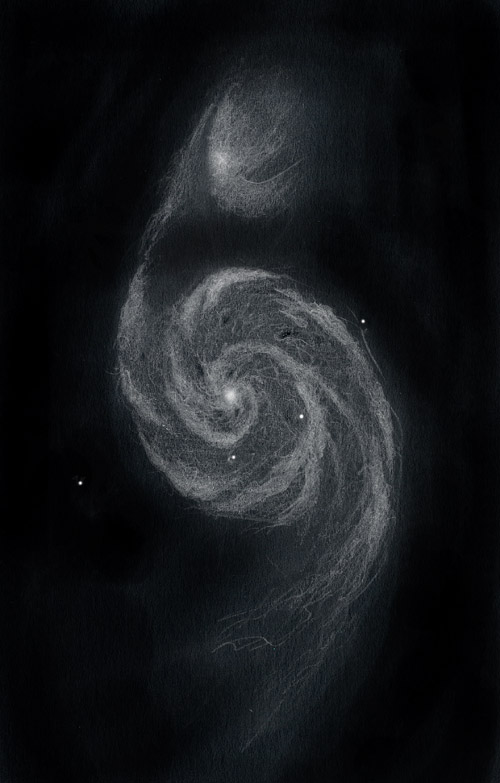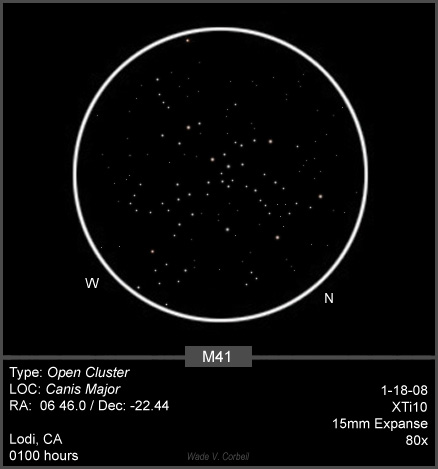
M41
Sketch and Details by Wade V. Corbei
I was able to observe M41 (NGC 2287) on Jan. 18th (early 19th), the ONLY day so far this month that has allowed for any sort of observing.
I was actually quite surprised at this OC that contained quite a few star-chains that only brought more interest, complexity and beauty to this jewel of the night-sky residing within Canis Major. I was fortunate in that my one night of observing was extremely clear and steady, allowing for some great observing of many of the fainter stars within this region.
This sketch, like all others, started out with a plain ol’ mechanical pencil, a #2 pencil & paper (my sketch book). The original sketch was then scanned into and digitized in PhotoShop CS3.
According to my observing notes, I spent a total of 1-hour & 10-minutes at the EP sketching and observing this OC. The longer I gazed at this OC, more star-chains and fainter stars seemed to slowly emrge from the inky darkness. I do rememebr having to stretch a bit after observing and sketching this one.





